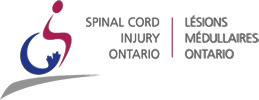Fuel consumption, comfort and price are important factors that many of us consider when purchasing a vehicle but safety features also need to be a top priority.
In a Public Opinion Survey done by Transport Canada, airbags and seat belts are among the most common safety features that Canadians recognize on their vehicles but they need to be used properly in order to achieve maximum protection.
Airbags
Airbags are essential in helping prevent injuries and death, especially in frontal (i.e. head-on) collisions. Airbags are inflatable devices that deploy in a fraction of a second during a serious collision. Make sure that you do the following each time you get into your vehicle:
- Always wear your lap and shoulder belt system. Airbags are not a replacement for seatbelts and are specifically designed to work with the seat belt restraint system. Failure to buckle-up will put you at significant, additional risk.
- Maintain distance between yourself and the airbag. Sit at least 10 inches (25 cm) away from the steering wheel airbag. Sitting any closer than 10 inches puts you (or your passengers) at risk of making contact with the airbag while it’s inflating.
- Tilt the steering wheel toward your chest, not your head or neck.
- Frontal airbags on the passenger side are larger, so passengers should move the vehicle seat back as far as possible to provide plenty of room.
- Front seat passengers should not put their feet or any objects on the dashboard.
Seat Belts
Transport Canada estimates that if all drivers and passengers always wore their seat belts, 300 lives would be saved every year in Canada. A seatbelt works by holding the occupant in place in the seat, reducing the risk of them striking the interior of the vehicle, colliding with other passengers or being ejected during impact or emergency braking.
A few key points to remember when using a seat belt:
- Wear a lap/shoulder belt system when available.
- Sit up straight and position the lap belt low over the pelvic bones / hips (not stomach) and the shoulder belt over the shoulder and across the chest. Never place the shoulder belt under the arm or behind the back. It’s dangerous.
- All occupants in a vehicle must be properly wearing a seat belt whether in motion or not.
- During pregnancy, women should wear the lap belt snug, low over the pelvic bones (below the baby) and the shoulder belt snug against the chest. The baby will be safer if the mother is protected in a crash.
If you or someone you know has an auto related injury, contact Mazin & Associates, PC to schedule your free consultation.
Source: Whiplash Prevention Campaign
Hundreds of thousands of people are injured, and thousands killed, by distracted drivers each year. Distracted driving is driving while doing another activity that takes your attention away from driving. Distracted driving can increase the chance of a motor vehicle crash.
There are three main types of distractions:
- Visual: taking your eyes off the road
- Manual: taking your hands off the wheel
- Cognitive: taking your mind off of driving
Texting while driving is frequently a cause of distracted driving car accidents. Smartphones have made it easy for us to stay connected at all times. But that can pose serious safety risks if someone decides to check his or her text messages, emails, phone calls, or any other mobile applications while driving.
While technology like smartphones, GPS systems and entertainment devices account for most of the distractions drivers face while operating their vehicles today, technology in the form of apps can be useful. In response to distracted driving dangers, cellphone applications have been developed to prevent texting while driving. Smartphone apps that disable texting have been around for a few years, but have gained popularity and sophistication in recent years.
Apps that disable talking or texting when in motion can give parents of teens peace of mind and help those who manage commercial fleets ensure drivers comply with texting laws. These apps have their limitations, however, and do not work on all phones or in all scenarios. While this technology may help parents and commercial truck companies prevent texting while driving, it is not a foolproof solution.
As cell phone use and driving becomes a national problem, the chances of being involved in a car accident with a distracted driver increase. If you or a loved one are injured by the carelessness of another driver, contact Mazin & Associates, PC, Personal Injury Lawyer at (416) 625-2122 for a free consultation.
Young drivers know but ignore the risks of driving and drinking or texting. Oftentimes, because they do not have experience handling or recognizing dangerous situations on the road, young people will fall victim to preventable accidents.
Parents play a key role in guiding our teen drivers by setting our own best example for improving safety while driving. Parents should talk to their teens and make sure that everyone is on the same page when it comes to safe driving.
Young drivers are more likely to speed, disregard traffic regulations, drive under the influence of alcohol or controlled substances, and partake in other risky driving behaviors. Young drivers may cause accidents because of their inexperience, or may be the victims by others because they lack the defensive driving skills.
Driving facts every teen should know:
- Don’t Speed
- Don’t Drink and Drive
- Always wear a seatbelt in the car
- Don’t Drive at night
- Don’t Drive Distracted
- Never Drive under the Influence
If you are in need of a personal injury lawyer to help you through an accident in Ontario, contact Mazin & Associates, PC, personal injury lawyers at (416) 625-2122.
No matter how bold or fearless you might naturally be, nothing has the potential to “shake you up” quite like a car accident can; especially, if it was one where you incurred injuries.
After a car accident, the body needs time to recover through rest and relaxation. There are many common misconceptions related to exercise and work after a car accident. For example, “Can I go to work?” or “Should I start going to the gym?” These types of questions are more suited for doctors rather than lawyers. Make sure that you consult your physician before you begin any exercise regimen outside of the treatment that was already prescribed. S/he will be able to give you a professional opinion on whether your body is ready and how much you need to be starting off with.
The time and extent of the recovery will be determined based on your injuries, both internal and external. If the injuries sustained include bleeding, a doctor will probably tell you not to resume any major exercise or lifting. With non-bleeding injuries a doctor will need to gauge the level of inflammation in the body. Soft tissue injuries and whiplash can get worse after the first 48 hours of a car accident.
Simple tips that can help you to heal following a car crash (but make sure to get your doctor’s advice on all of these points first):
- Go home and rest
- Drink at least 6 cups of fluid every day for at least a week after your accident
- Make an appointment to see your physician immediately
- Don’t exercise right after a car accident
- You should start slow walks as soon as you are able to do
- Don’t stress yourself out
Although the accident may not have been your fault, your recovery is your responsibility. You must take the initiative and follow your doctor’s orders but you should also listen to your body. If you experience any pain, stop the exercise and inform your doctor of what is happening.
At Mazin & Associates, PC, Personal Injury Lawyers can help you find the best medical practitioners for your type of injuries. This will enable you to determine when you can go back to work. Call us at (416) 625-2122 today for a free consultation.
A dashboard camera is a camera that is placed on your wind shield or dashboard and is continuously recording everything that happens while you are driving your car. More advanced versions of the cameras can also record rear views; some are even equipped with infra-red sensors to enable recordings in the dark too. The main purpose of using this type of camera is to record exactly what happened in the event of a car accident.
When your car accident claim evolves into a full-blown dispute, dashboard cameras are becoming a popular way for careful drivers to verify that they were not at fault after an accident. Any video you provide must be of good enough quality to clearly show the third party. A dashboard camera can be a useful tool since it is sometimes difficult to explain or recall exactly what happened during the accident. A dashboard cam will be there to contribute to find out the truth. So, when an accident occurs, it may be easier for you to prove not only that the other person was at fault, but how he or she violated the law.
There are three organizations that would probably benefit the most from such a device being used by consumers: injured individuals, insurers and law enforcement. This is because a dash cam can greatly contribute to the resolution of traffic accidents and claims.
Some of the insurance companies have their own policies whether dashboard camera footage will even be considered, if at all. Some of the major insurance companies have yet to set an official policy regarding how they review and use dashboard camera footage. The insurance company could choose to consider it if they think it would help, but they are not always required to. However, Car Accident Lawyers, Mazin & Associates, PC would know how to evaluate such a video and determine if it can be made admissible. To find out how we can help you after your accident, call us at (416) 625-2122.
Your claim might be strengthened from the dashboard camera footage and might potentially reduce the time that is needed to settle your case. Although dashboard camera footage is not always conclusive evidence of what happened during the accident, it can be very helpful.







